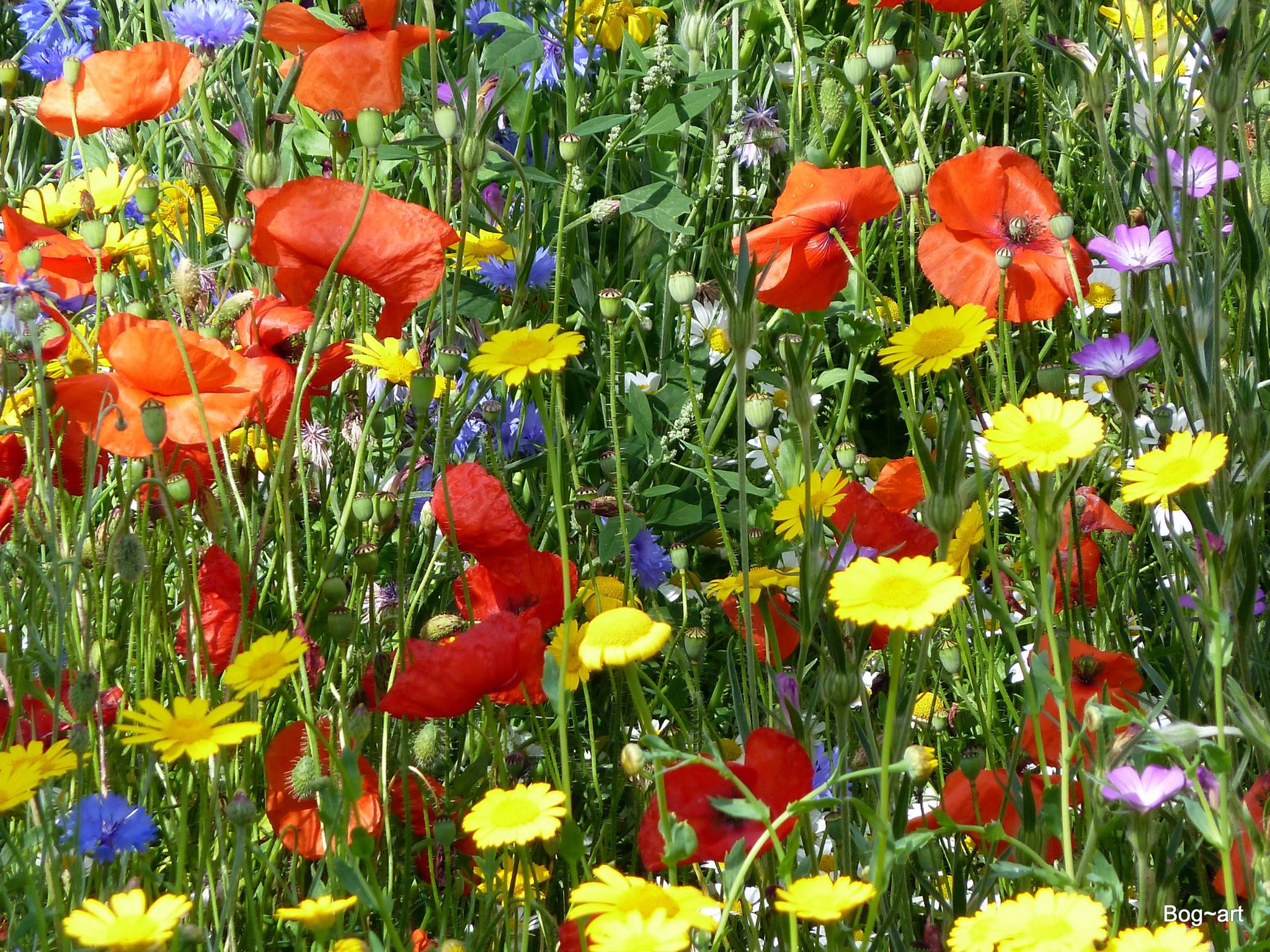SUMMER WILDLIFE MEADOW

Watch birds swoop down from the sky over the grasses and wildflowers. Observe butterflies delicately fluttering amongst the scene as they lay their eggs on the meadow edge and sit quietly in the dark listening to the magical sounds of the creatures that inhabit the long shards of rustling grasses and flowers. What’s not to like!
Wildflower meadows prefer sunny, open spaces without any competition from competing shrubs and trees. They are unique in that they prefer poor, unfertile soil, where they produce a wonderful display of soft grasses and colourful wild flowers.
THE VISITORS
Some wildlife will create homes in the nectar rich meadows, full of visiting honey bees, bumblebees and butterflies who are attracted to bright colours, shapes and scents and the larvae of butterflies and moths will happily graze on the leaves
The ‘dark green fritillary’ butterfly, is a common visitor to the meadow as is the ‘Burnet moth’, with its glossy wings and red or yellow warning markings. Many butterflies will breed and lay their eggs on the grass edging for their emerging caterpillars to feed on. Before long you can see the fluttering of ‘Meadow Browns’, Marbled Whites and ‘Skipper’ butterflies, dancing around the long slender, grass.
Numerous insects that live within the meadow, attract birds such as robins, wrens and tits all year round, whilst the seeds of grasses and wildflowers attracts finches, linnets, greenfinches and chaffinches. The insects also attract smaller animals such as shrews, mice and hedgehogs, which in turn can attract larger animals such as foxes.
A MOVING PAINTING
There are many varieties of grasses and flowers for you to choose for your wildmeadow and here are some of my favourites:
Sheeps sorrel (Rumexacetosella). A plant with a gorgeous orange haze which attracts finches and whose leaves are used for egg laying by the small copper butterfly.
Field Scabious (Knautia arvensis) Mauve blue flowers loved by beetles and moths as a good source of nectar and pollen.
Ox-eye daisy (Leucanthemum vulgare) Everyone’s favourite, with its yellow centre and white petals it produces a carpet of flowers and is also one of the easiest to grow.
Meadow buttercup (Ranunculus acris) Unlike the creeping buttercup, this one stands tall and elegant, up to 1m tall with beautiful single flowers and green stems.
Musk Mallow (Malva moschata) Grown up to 1.5 metres in height it produces beautiful pale pink flowers up to 5cm across.
The perfect companion to wild flowers are beautiful slender grasses which catch the breeze and happily sway in harmony with each other.
Three or four different varieties of grass can be used, but NEVER use ryegrass which is a tough grass used in sports pitches. Grass seeds can be obtained off the shelf in any garden centre and should be spread sparingly in order to leave plenty space for wild flowers. Mixing it with sawdust will help spread it more evenly.
Popular grasses include Red Fescue (Festuca Rubra), Common Bent (Agrostis Tenuis), Smooth Meadow grass (Poa Pretense) and
Hay-meadow species such as Meadow Foxtail (Alopecuris Pratensis), Timothy (Phleum Pretense) and Yorkshire Fog (Holcus Lanatus). Vernal grass (Anthoxanthum Odoratum) will also give a new mown hay smell to the mix.
PREPARING THE GROUND
Mark out the area with free flowing curves and using a rope as a guide.
Leave a sufficient gap between the grass and any garden features or bedding. Next follow the line of the rope cutting into existing turf using a spade or half moon edging iron. Lift the existing turf, then cultivate the area with a fork and finish with raking.
Mix the wildflower seed with the grass seed prior to sowing. The mix is usually 60-80% grass seed with the remainder been wildflower seed. Sow the mix lightly at a rate of 15g per square metre to ensure that the grass doesn’t suffocate the slower wildflowers as they develop.
Don’t sow more than 2g per square metre of grass seed and once the grasses are sown, over sow with your selected wildflowers.
Once sown, run the back of a rake gently through to cover the seedlings lightly and then refirm. Tying cotton from end to end with twisted aluminum foil will keep the birds away whilst it starts its journey and when the dry and drizzly weather begins, the blank canvass transforms into a haven of glorious colour.
MAINTAINING A WILDFLOWER MEADOW
If it is large enough, mowing a path through the meadow will enable you to walk through it and observe any wildlife without having to trample through the grass itself. Mow paths frequently to stop neighboring wildlife from the long grass making its habitat in the path areas and subsequently getting mowed down later on.
Hay meadows are best cut after flowering but can be kept till late winter and provide shelter and hibernation for insects and grassland species. When the grass is finally cut, leave the clipping for a few days to allow wildlife to relocate itself before disposing of. For summer meadows mow until June and then again in late September.
Until then, simply enjoy!